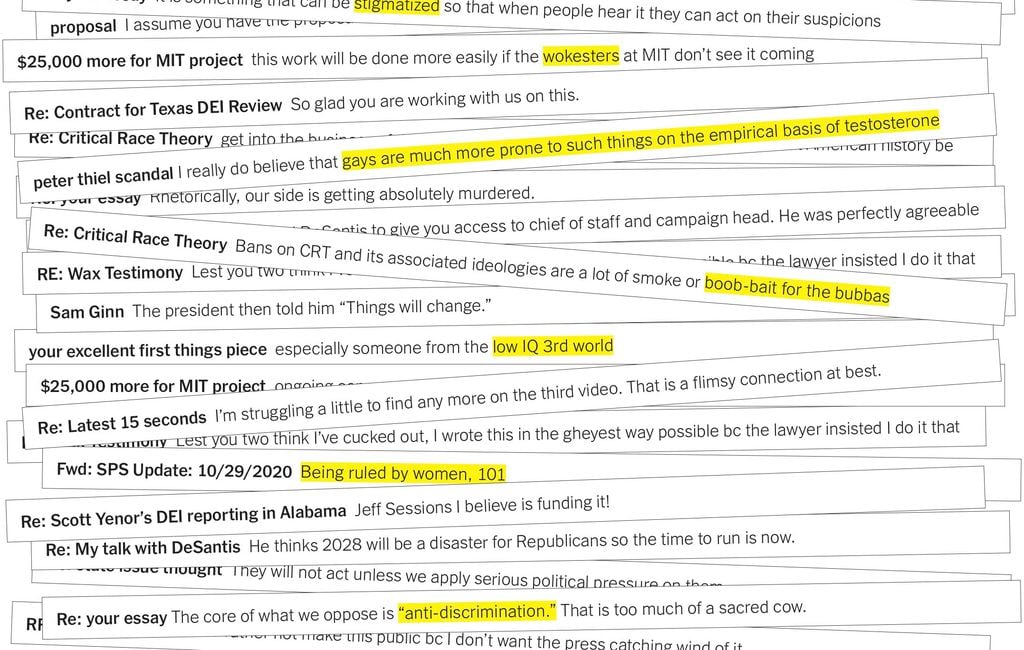MLB, Major League Baseball, is the professional baseball organization in North America. It consists of 30 teams split between the American and National Leagues.
MLB serves as the pinnacle of baseball’s hierarchy, showcasing the sport’s highest level of play. Established in 1903, the league has become a staple of American culture, extending its influence globally. Each season, MLB teams compete in a grueling 162-game schedule, leading to a series of playoff rounds, and culminating in the World Series.
Fans around the world follow their favorite teams and players through an extensive season, spanning from April to October. With its blend of strategic gameplay, athletic prowess, and storied history, MLB captivates audiences, offering a yearly spectacle of competition and entertainment. The league not only represents the sport’s elite competition but also drives significant economic impact through merchandise sales, ticket revenue, and broadcasting rights, solidifying its role as a major sports entity.
The Structure Of Major League Baseball
Understanding the structure of Major League Baseball (MLB) is like exploring the blueprint of America’s favorite pastime. This complex organization brings together fierce competition, skilled athletes, and a deep-rooted history in sports. Let’s dive into the intricate world of MLB, where the thrill of the game meets the precision of its organization.
The Two Leagues: American And National
At the heart of MLB lies the split between the American League (AL) and the National League (NL). These two leagues form the pillars of professional baseball in the United States.
- Establishment Dates: The AL was born in 1901, while the NL has roots dating back to 1876.
- Team Count: Each league boasts 15 teams, totaling 30 in MLB.
- Designated Hitter Rule: The AL employs the designated hitter (DH) role, while the NL traditionally did not until recent changes allowed it.
Every year, the best teams from each league compete in the World Series. It’s the pinnacle of baseball glory.
Hierarchy And Roles: From Commissioner To Players
MLB’s hierarchy ensures the sport runs smoothly, from broad decisions to game-day actions. At its apex sits the Commissioner of Baseball, the chief authority in the league.
| Position | Role |
|---|---|
| Commissioner | Oversees all aspects of MLB, including rules and negotiations. |
| Owners | Invest in teams and make essential franchise decisions. |
| General Managers | Handle the team’s roster and transactions. |
| Managers | Direct the team’s strategy and in-game decisions. |
| Coaches | Train and mentor players in various aspects of the game. |
| Players | Compete on the field, bringing the game to life. |
Each role is vital in delivering the spectacular show that is MLB, from the first pitch to the final out.

Credit: www.facebook.com
The Regular Season Explained
The Regular Season Explained is a thrilling journey through the heart of Major League Baseball. Teams battle across North America, eyeing the coveted World Series title. Let’s dive into the mechanics of this exciting period.
Games And Scheduling
Baseball fans cherish the regular season for its rhythm and routine. Each MLB team plays 162 games, typically from April to October. This breaks down into:
- Home and away games against division rivals
- Interleague matches for extra excitement
- Special series like the All-Star Game and holiday events
Teams often play daily with short breaks, sometimes traveling across time zones. The schedule is a test of endurance and strategy for every team.
Determining Standings: Wins, Losses, And Stats
The standings tell the story of the season.
A team’s success hinges on their win-loss record. The more wins, the better their chances of reaching the playoffs. Here’s how rankings work:
| Standings | Importance |
|---|---|
| Wins (W) | Main driver of standings position |
| Losses (L) | Need to minimize for better ranking |
| Winning Percentage | Wins divided by total games for accuracy |
Other stats like runs scored, home runs, and ERA (Earned Run Average) vitalize player and team analyses.
Stats spotlight stars and strategies, playing a crucial role in the sport’s narrative.
Behind The Scenes: Management And Operations
Imagine a baseball game without a scoreboard, players, or even a stadium. Sounds impossible, right? That’s because the magic of Major League Baseball (MLB) isn’t just in the home runs and the seventh-inning stretch – it happens behind the scenes. In this section, we peel back the diamond to explore the muscles and minds that make MLB run like a well-oiled machine.
Front Office Functions
The heart of any baseball team lies within its front office. These are the strategists, the number crunchers, and the talent scouts.
- Contract Negotiations: They ink deals to keep the stars on the field.
- Scouting: Up-and-coming talent needs to be spotted early.
- Analytics: Every play is a number, and they add up to victory.
- Finance & Operations: They ensure lights stay bright for night games.
Role Of The General Manager
The General Manager (GM) is the team’s architect. Think of them as the head coach of the front office.
| Responsibility | Impact |
|---|---|
| Team Building | Crafts the roster to win championships. |
| Trades and Acquisitions | Finds the right puzzle pieces at the right time. |
| Salary Cap Management | Makes sure the team budget hits a home run. |
| Public Relations | Keeps the team’s reputation shining like a trophy. |

Credit: www.sltrib.com
The Farm System: Feeding Talent To The Big Leagues
Major League Baseball’s (MLB) success hinges on a vital component known as the Farm System. This system acts as a nursery for nurturing talent, where budding athletes evolve into seasoned professionals ready to take the field in the big leagues.
Minor Leagues And Their Structure
The Minor Leagues serve as the backbone of the Farm System, consisting of multiple tiers. Teams are classified based on their level of play, with Triple-A being the highest, followed by Double-A, High-A, Low-A, and then Rookie levels. Each tier presents a step closer to reaching MLB.
Overview of Minor League Levels:
- Triple-A: The final checkpoint before the majors
- Double-A: Where prospects start to shine
- High-A: Advanced skill development
- Low-A: Refining the raw talent
- Rookie: The starting point for drafted or signed talents
Affiliates and Teams:
| Level | Teams |
|---|---|
| Triple-A | International League, Pacific Coast League |
| Double-A | Eastern League, Southern League, Texas League |
| High-A | Midwest League, South Atlantic League |
| Low-A | Northwest League, New York-Penn League |
| Rookie | Gulf Coast League, Appalachian League |
From Prospect To Pro: The Player Journey
Prospects start as raw talent, often discovered through scouting and drafts. They embark on a journey toward becoming professionals within the structured tiers of Minor League Baseball.
General Path:
- Signing with a MLB organization
- Assignment to a Rookie level affiliate
- Promotion through higher levels based on performance
- Receiving an invitation to Major League Spring Training
- Debuting in MLB upon successful advancement through the ranks
During this progression, players hone their skills, engage in competitive play, and experience personal growth. They face rigorous challenges that test their readiness for the big leagues. Success stories of players climbing through the ranks inspire many young athletes and keep the dream of playing in MLB alive.
The Economics Of Baseball
The world of Major League Baseball (MLB) is not just a spectacle of home runs and strikeouts. It’s also a massive economic machine, driving substantial revenue from various streams. Understanding the financial aspects can offer insight into the league’s inner workings and how teams stay competitive.
Revenue Sources: Tickets, Tv, And More
MLB teams generate income in several ways, key among them being ticket sales. Stadiums filled with cheering fans are a primary source of revenue. But it doesn’t stop there.
- Television rights bring in a hefty sum, with national and local deals.
- Merchandising, from jerseys to hats, continues to be a fan-favorite.
- The sale of licensed products and memorabilia adds to the mix.
- Corporate sponsorships and advertising deals also play crucial roles.
Player Contracts And Salary Cap
In the MLB, team spending can vary greatly. Unlike some sports, there is no hard salary cap. Teams often commit millions to retain star talent. This leads to complex contracts and negotiations.
| Contract Type | Details |
|---|---|
| Guaranteed Contracts | Players receive the full contract value. |
| Incentive-based Deals | Pay raises tied to performance milestones. |
| Arbitration Eligibility | Players with 3-6 years can negotiate after season. |
Teams must balance their budgets, ensuring enough funds to field competitive rosters yearly. Smart financial management becomes key to a team’s success on and off the field.
Mlb Draft Demystified
Understanding how new talents join Major League Baseball teams is thrilling. The MLB Draft is a yearly event that shapes the future of teams and careers of young players. It’s a complex process with a significant impact on the baseball landscape. Let’s demystify how it all works!
Draft Process And Order
The MLB Draft process determines which teams get first pick of new talent.
- Takes place annually in June, spanning multiple days.
- Teams choose from amateur players, including high school and college athletes.
- Draft order is based on the previous season’s standings.
- Teams with the worst records pick first, helping them improve faster.
- A lottery system also affects the draft order for added fairness.
Impact On Teams And Players
The draft can be a game-changer for teams and a dream come true for players.
- Teams get fresh talent that can turn their fortunes around.
- A strong draft pick can become a franchise player.
- Players get a chance to play professionally and make a name for themselves.
- Draft success influences team strategy for years.
- Players often negotiate contracts that set the stage for their careers.
The All-star Game And Postseason Format
The MLB All-Star Game and Postseason are highlights of the baseball calendar, offering fans thrilling displays of talent and the march towards the championship. From the selection of the league’s best players to the hard-fought battles leading to the World Series, every moment captures the excitement of the game.
Selection Of All-stars
Every summer, the MLB All-Star Game shines a spotlight on the sport’s top athletes. Players earn their place through a mix of fan votes, player ballots, and selections by the Commissioner’s Office. It’s a multi-step process that ensures a diverse mix of the season’s best talents.
- Fan Voting: Fans vote online for starting players.
- Player Ballots: Players and coaches vote for pitchers and reserve players.
- Final Vote: Fans cast one last vote to fill the final roster spots.
Road To The World Series
The Postseason is the ultimate test, culminating in the World Series. After a grueling 162-game season, the top teams from each league face off in a tiered tournament.
- Wild Card Game: Single elimination for the final spots.
- Division Series: Best-of-five series determines the league semifinalists.
- Championship Series: Best-of-seven series decides league champions.
- World Series: The two league champions battle in a best-of-seven series for the MLB crown.

Credit: podcasters.spotify.com
Rules And Regulations
The backbone of Major League Baseball lies within its complex and detailed ruleset. Understanding these regulations is vital for players, coaches, and fans alike. Spanning from pitching to batting and fielding, each aspect of the game is governed meticulously. Additionally, the evolution of these rules reflects the sport’s growth and technology integration.
The Rulebook: Pitching, Batting, And Fielding
The intricate dance between pitcher and batter defines the pace of the game, moderated by fielders poised for action. Each of these roles comes with a set of rules.
- Pitching: Regulations dictate mound distance, balk rules, and legal pitching motions.
- Batting: Rules cover the batter’s box dimensions, bat material, and hit definitions.
- Fielding: Fielders must adhere to interference and obstruction standards.
Let’s break down these guidelines further:
| Aspect | Key Rules |
|---|---|
| Pitching | Pitchers must pitch within 20 seconds with bases empty and can’t fake a throw to first base. |
| Batting | There are penalties for stepping out of the box and hitting a ball not struck within the strike zone. |
| Fielding | Fielders cannot block the base paths without the ball, and must catch the ball in glove or hand for an out. |
Modern Changes: Replay Reviews And Rule Adjustments
The integration of technology brought replay reviews into the fold. This ensures accuracy in umpires’ decisions impacting the game’s outcome.
Recent rule adjustments aim to improve game pace and safety. These include:
- Limits on mound visits without pitching changes.
- Introduction of the three-batter minimum for pitchers.
- Implementation of the seven-inning doubleheaders.
Sport thrives on adaptability. These changes show MLB’s commitment to enhancing the game for everyone involved.
Baseball’s International Reach
Major League Baseball (MLB) is not just an American pastime. It’s a sport that crosses oceans and borders, connecting fans and players around the globe. From the Dominican Republic to Japan, baseball’s influence extends far beyond the United States.
Global Talent In Mlb
MLB is a melting pot of international players. Each season, players from over 20 countries and territories add their skills to the league. These athletes bring unique styles and talents, enriching the game for fans everywhere. Teams scout globally, aiming to sign the best of the best. This quest for top talent leads to a diverse and dynamic league.
- Dominican Republic: Known for producing powerful hitters and ace pitchers.
- Venezuela: A hotbed for infield talent and charismatic players.
- Japan: Home to precise pitchers and disciplined hitters.
- Cuba: Offers a mix of seasoned veterans and exciting new prospects.
The World Baseball Classic
The World Baseball Classic (WBC) furthers baseball’s international camaraderie. This tournament showcases the world’s best players competing for their home countries. The WBC occurs every four years, featuring teams from North America, Asia, Europe, and more. It’s a stage where global stars shine and new talents emerge. Fans witness baseball played with national pride at stake, making the WBC a riveting event for all.
- Teams compete in an exciting pool play structure.
- The best advance to elimination rounds.
- Ultimately, one nation is crowned World Champion.
Controversies And Scandals
The world of Major League Baseball (MLB) is not just home runs and strikeouts. It also has its fair share of controversies and scandals that have rattled the league over the years.
Doping And Drug Policies
MLB’s battle against doping is ongoing. Stringent drug policies aim to keep the game clean, but violations still occur.
- Suspensions for performance-enhancing drugs (PEDs)
- Instituting random drug testing
- Drug Prevention and Treatment Programs for players
Recent years have seen high-profile suspensions that sparked heated debates on drug use in sports.
Historic Scandals And Their Impact
MLB’s past is marked by significant scandals. These controversies have left a lasting imprint on the league’s integrity.
| Year | Scandal | Effect |
|---|---|---|
| 1919 | Black Sox Scandal | Game fixing allegations; eight players banned |
| 1980s | Pete Rose Betting Scandal | All-time hit leader banned for life |
| 2000s | Biogenesis Scandal | 14 players suspended for PEDs |
Each scandal challenged the league’s credibility and led to stricter rules and oversight.
Frequently Asked Questions For How Mlb Works
How Does Mlb Series Work?
An MLB series typically consists of two to four games played consecutively between the same teams at one venue. Teams face off multiple times to determine the series victor based on the best performance across these games.
How Does Mlb Game Work?
An MLB game consists of nine innings with each team taking turns to bat and field. A team scores by hitting the ball and running bases. The team with the most runs at the end wins.
How Does The Mlb League Structure Work?
The MLB league consists of 30 teams split into two leagues: the American League (AL) and the National League (NL). Each league has three divisions: East, Central, and West. Teams compete within their divisions during the regular season, followed by playoffs leading to the World Series.
How Does Mlb Regular Season Work?
The MLB regular season consists of 162 games where teams compete within their respective leagues and divisions. Teams aim to secure the best records to advance to the postseason playoffs.
What Is Mlb?
Major League Baseball (MLB) is a professional baseball organization, comprising 30 teams split between the American and National Leagues.
Conclusion
Understanding the intricacies of Major League Baseball enriches your appreciation of the sport. This post has laid the groundwork for your MLB knowledge. Embrace the excitement of baseball and share in the thrills of every pitch, hit, and home run.
Keep this guide handy as you dive deeper into America’s favorite pastime.


